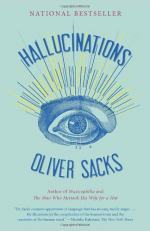|
This section contains 451 words (approx. 2 pages at 400 words per page) |

|
Hallucinations Summary & Study Guide Description
Hallucinations Summary & Study Guide includes comprehensive information and analysis to help you understand the book. This study guide contains the following sections:
This detailed literature summary also contains Topics for Discussion on Hallucinations by Oliver Sacks.
Hallucinations, by Oliver Stacks, is an extraordinary look at the causes and circumstances surrounding one of the most controversial symptoms in today's neurological field. Sacks examines a variety of reasons normal, everyday citizens might have hallucinations, and helps to remove the stigma often associated with these. His book is informative and technical, while giving enough real world context and examples to make it enjoyable for most readers.
Hallucination begins with an Introduction by Oliver Sacks who discusses the stigma often surrounding hallucinations. He opens the book with a discussion of Charles Bonnet Syndrome, a disease in which hallucinations occur in those who are technically blind due to degenerative visual impairment. He continues by looking at sensory deprivation, and the hallucinations that occur for those who are in places of visual or sensory monotony, such as prisoners in confinement. He then examines hallucinatory smells, focusing on scents that may seem to occur, when in reality, they do not. This leads to a discussion in Chapter 4 of auditory hallucinations, including simple noises to full musical compositions. Chapter 5 discusses the hallucinations that often occur in Parkinson's patients, in part due to the drugs that help their physical symptoms. This leads to a discussion in Chapter 6 of altered states, or hallucinations due to drugs, a topic Sacks on which has much information, since he experimented widely. Sacks also has experience with his next topic, migraines, because he had the auras frequently as a child. His next chapter focuses on the hallucinations that occur in epilepsy, and continues into a chapter discussing hallucinations that occur when only one eye is blind. The following chapter focuses on delirium, and hallucinations that occur due to toxic levels of chemicals or brain damage. This leads to a chapter on the pseudo hallucinations of near sleep, and the very real hallucinations on waking. The following chapter examines narcolepsy, and the true meaning of nightmares, or the hallucinations of REM sleep. Sacks' examination of the hallucinations that occur as a result of PTSD follows in Chapter 13, and his discussion includes an interesting take on what may make us see ghosts. Chapter 14 focuses on doppelgangers, or the self hallucinations, and finally, Chapter 15 revolves around the ideas of phantom limbs, and the "other" presence hallucination, which Sacks proposes might explain the feelings of "God."
As a technical piece, this book is filled with ample explanations of research studies and technical neurological explanations for the various hallucinations presented, but more importantly, Sacks writes with both personal experience and experience as the doctor of many patients, giving this book an entertainment value to coincide with its instructional value. It is an entertaining, enlightening, and engaging look into the science of hallucinations.
Read more from the Study Guide
|
This section contains 451 words (approx. 2 pages at 400 words per page) |

|



